2019 Volume Issue 2
December 20, 2019
For a downloadable version, click the following:
…a bit more compressed version of the PDF
Tariffs…or whose Ox is Being Gored
The questions people ask are relatively simple:
- What is a tariff and how does affect me as a consumer?
- Are tariffs a good or bad thing or what is the objective of putting tariffs in place?
- Are there other/better alternatives to reaching the same goals?
Background
Tariffs are simply taxes place on imported goods and or services.
In March 2018, a 25% tariff was placed on imported steel and a 10% tariff placed on imported aluminum. There were a few exemptions, but the main target was and remains China.
In 2018, China accounted for 51.3% of the world's steel production.
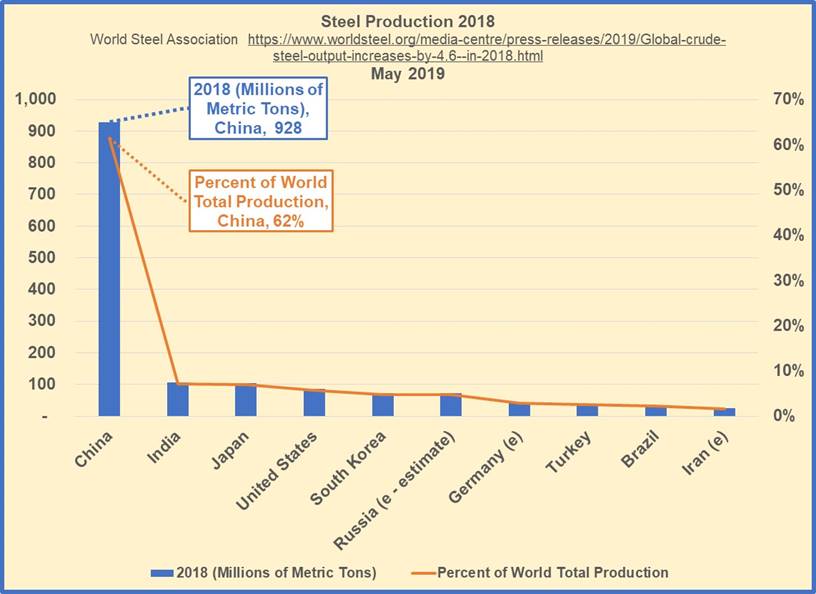
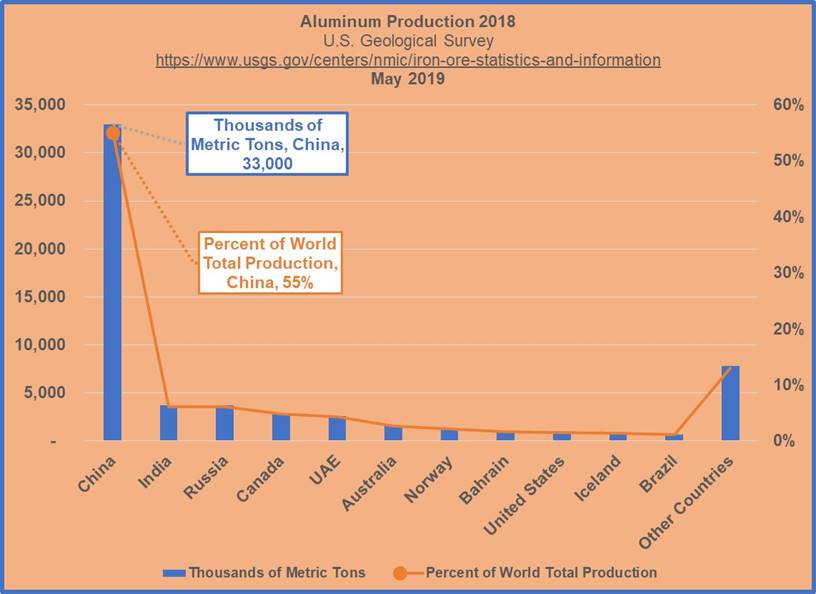
In 2018, China accounted for 55% of the world's aluminum production.
U.S. Geological Survey (Aluminum on page 20; Iron Ore on page 83 https://prd-wret.s3-us-west-2.amazonaws.com/assets/palladium/production/atoms/files/mcs2019_all.pdf
Interestingly, the underlying ores associated with the production of steel - iron ore, and aluminum - bauxite, have been coming primarily from Australia. Australia provides 36% of iron ore production and 25% of bauxite production.
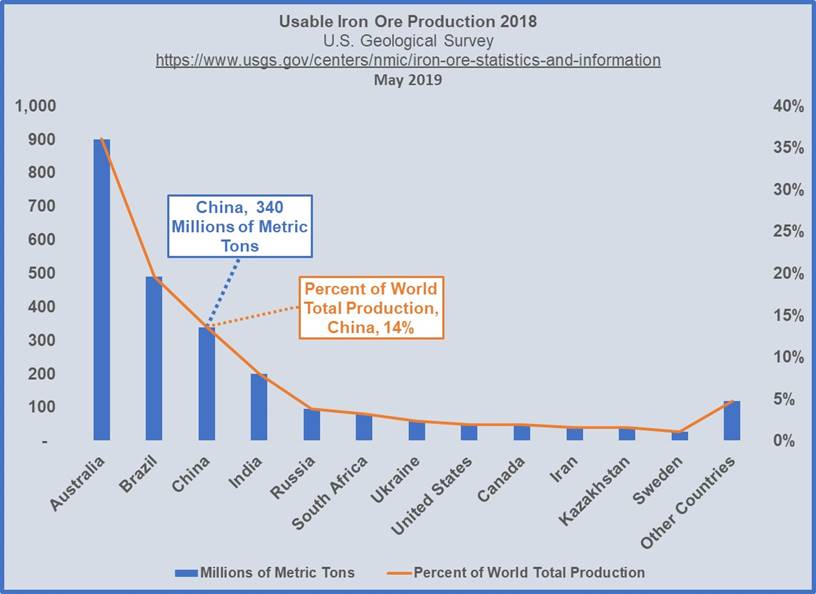
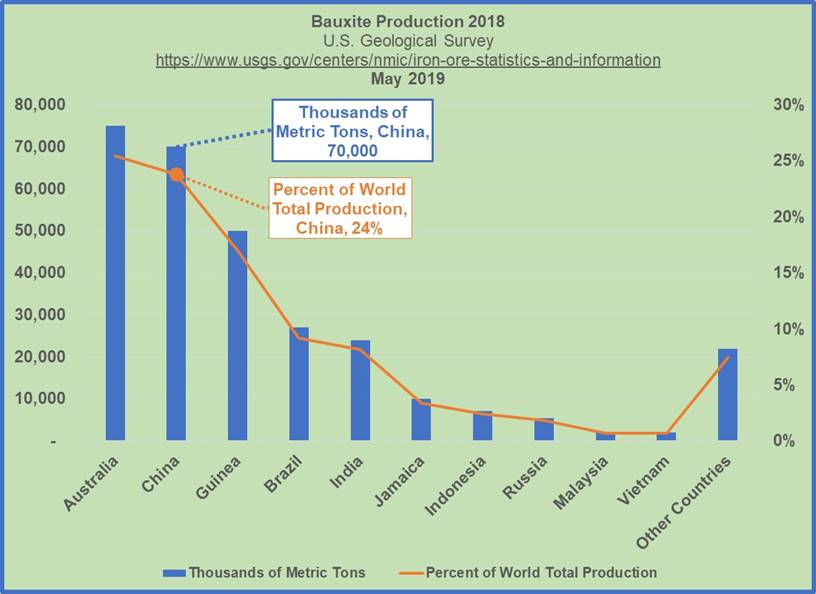
Sticking to the basics, the consumer benefits most from competition and the goal for firms in terms of market structure is simply to grow in terms of market share. The more market share you control, the more price (market) power you possess.
It's clear by using the examples of iron ore/steel and bauxite/aluminum that China has already achieved an enormous amount of market power in the world markets.
In an overall sense, this is further amplified and illustrated with the expanding U.S. Current Account (Trade) Deficit with China.
The strategy is very clear from an economic perspective - dumping: drive out competition with lower prices so that you gain market/price power in the longer run.



Back to the tariff approach in addressing trade imbalances: impact on consumers
Again, tariffs are simply taxes on imported goods. Conventional wisdom dictates that those tariffs (taxes) are passed on to the consumer in the form of higher prices. If the Chinese importer were to tack the cost of the tariff onto the price of the good in question, the domestic firm in the U.S. would likewise bake that into the selling price to consumer. The result of course is that the household as consumer would pay a higher price for the good.
The reality is that if the price of a good (in most all cases) goes up, the quantity demanded for that good will fall. Since the price increase was not initiated by the Chinese firm aiming to increase revenue, the immediate result will be a fall-off in sales (revenue). It might be in the best interest of the Chinese exporter to actually reduce prices to offset the tariff as much as possible.
The puzzling part of this for many people is how could the Chinese producer reduce its prices and retain its profitability. This could most readily be achieved through currency manipulation - by devaluing the CNY Chinese yuan relative to the U.S. dollar. It might be more correct to say that this could be achieved by further devaluation of the Yuan. While this is a discussion for a future newsletter, it's important to point out the foreign exchange or international finance aspect of international trade. It's not just the cost of production of the goods or services in question, but there is also the foreign exchange cost to consider.

The takeaway is this: if the cost of the tariff is passed along to the consumer, the overall impact on the consumer's budget depends, to great extent, on the availability of substitutes --- competition
Efficacy of Tariffs
The question arises relating to the usefulness of tariffs. On the one hand, proponents of tariffs point to the fact that trade deficits reduce economic growth and reduce employment in those affected export industries in the home country. The opposing viewpoint brings up the fact that higher prices harm consumers and the cost of protecting those jobs in the domestic export arena are very high according to many studies.
Let's take a look at a much-ignored example of how the proliferation of substitutes can alter the competitive landscape in relatively fast order. Looking back to 2008, the U.S. energy bill in terms of net imports exceeded $400 billion. There was absolutely no way that this going to be reduced going forward. Within a few short years, due primarily to fracking for natural gas and oil, the U.S. has become virtually energy independent. This all points the presence of substitutes. The American presence in worldwide energy markets has increased competition dramatically and served to moderate prices - despite continued roiling in global markets due to ongoing instability in the Middle East, Africa and Venezuela.
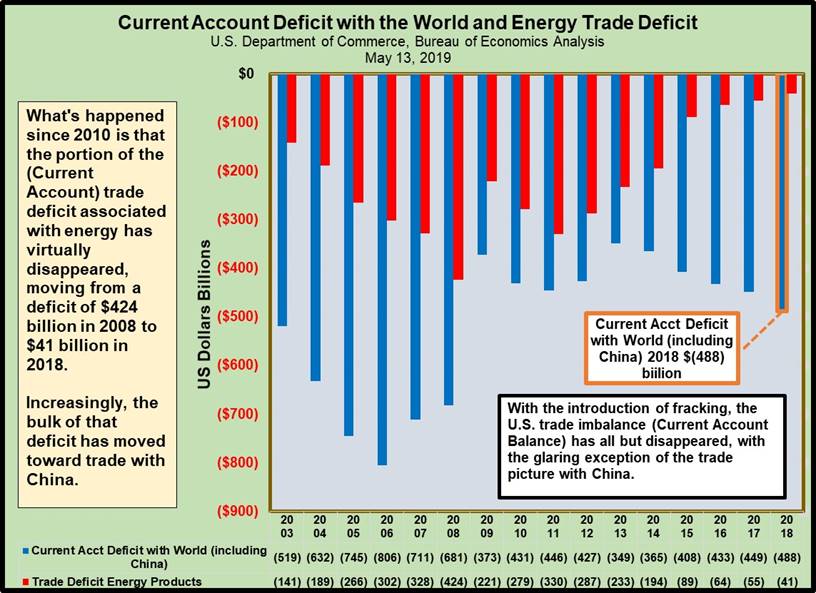
In the long run, tariffs and nontariff trade barriers (import quotas, voluntary export quotas, etc.) are less than ideal and efficient since they require significant and expensive regulatory measures to enforce and impede the free flow of goods and services. In the near term, due to political realities on both the Chinese and the American side, tariffs seem to be the most expedient path to remedying the trade deficit and revealing underlying issues with trade imbalance. In particular, this brings to the surface issues related to a foreign exchange problem going back to the 1980s.
Alternative to Trade Barriers?
Again, we will discuss this further at a later date, but it's important to understand that in international trade involves two prices: 1) the cost of production within the home country; 2) the price of the foreign exchange.
Other topics come into play in terms of factor price equalization, the reality that productive resource cost tend to even out over time in a global sense. When we consider such things as increased energy independence in the U.S. and rising labor costs in places like China and India, this all points to improve American competitiveness in the global arena.
Onward…
The bottom line is that it is obvious that China is in pursuit of market domination (concentrating power in market structures); within that economic framework, that has proven to be harmful in an overall sense for consumers over and over again: drive out competition and assume market leadership position.
China 2030
https://www.worldbank.org/content/dam/Worldbank/document/China-2030-complete.pdf
The reality, as it pertains to the foreign exchange issue, is that a devalued yuan enables China to alleviate (export) domestic unemployment and prevents the U.S. from growing jobs (adding employment) in the same export arena.


